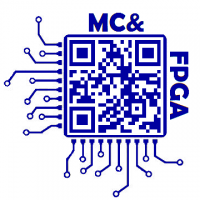3D Printing in Online Education
Hanna Zavolodko, Nataliia Haidar
II International Scientific and Practical Conference Theoretical and Applied Aspects of Device Development on Microcontrollers and FPGAs (MC&FPGA), Kharkiv, Ukraine, 2020, pp.53-54.
Abstract
The review object is the subsystem verification and printing 3D-model online learning system mixed type. To do this, a review of analogues, technologies, stages of printing were identified. The aim is to design with IP topics that uses the additive technologies in the educational process. In the given IDEF – diagram describing the function of the system; authentication rules, verification of 3D-models, sending the model to print, selecting a device online, and basic screen forms.
Keywords: additive technologies, blended learning, 3d-model, 3d-printing, rules database, database
Full Text: PDF
References
- Lipnitski L.A., Pilgun T.V. Additive technologies and their perspectives in education. «System analysis and applied information science». 2018;(3):76-82. (In Russ)
- M. Palinchak and V. Yzheshchuk, “Basic models of food education in the context of political ideology of the European Union”, Geopolitics of Ukraine: history and modernity, vol. 0, no. 219, pp. 108-123, 2017. doi: 10.24144 / 2078-1431.2017.2 (19) .108-123.
- I. Pavlova and E. Tarasova, “The role of modern innovative technologies in the educational process”, International Journal of Advanced Studies, vol. 8, no. 3, p. 61, 2018. doi: 10.12731 / 2227-930x-2018-3-61-78.
- V. Povzun, “The role of the modern educational technologies in the development of system thinking of university students”, Contemporary Higher Education: Innovative Aspects / Sovremennaia Vysshaia Shkola: Innovatsionny Aspect . Dec 2019, Vol. 11 Issue 4, p. 45-51, 2019. doi: 10.7442/2071-9620-2019-11-4-45-51.
- C. Vorotnikova, “Application of modern information technologies in the educational process”, european humanities studies: state and society, vol. 3, no., pp. 43-51, 2019. doi: 10.38014/ehs-ss.2019.3-i.04.
- I Gibson I., Rosen D. W., Strucker B. Additive Manufacturing Technologies. Rapid Prototyping to Direct Digital Manufacturing. Springer, 2010. 459 p.
- I. Ituarte, N. Boddeti, V. Hassani, M. Dunn and D. Rosen, “Design and additive manufacture of functionally graded structures based on digital materials”, Additive Manufacturing, vol. 30, p. 100839, 2019. doi: 10.1016/j.addma.2019.100839.
- S. Sysoieva and k. Osadcha, “Status, technologies and prospects of distance learning in higher education in Ukraine”, information technologies and learning tools, vol. 70, no. 2, p. 271, 2019. doi: 10.33407 / itlt.v70i2.2907.
- I. Gevko, “Application of computer technologies in the educational process of training in higher education institutions”, naukovi zapiski, vol. 0, no. 142, pp. 51-59, 2020. doi: 10.31392/nz-npu-142.2019.06.
- C. Schelly, G. Anzalone, B. Wijnen and J. Pearce, “Open-Source 3-D Printing Technologies for Education: Bringing Additive Manufacturing to the Classroom”, SSRN Electronic Journal, 2015. doi: 10.2139/ssrn.3331158.

